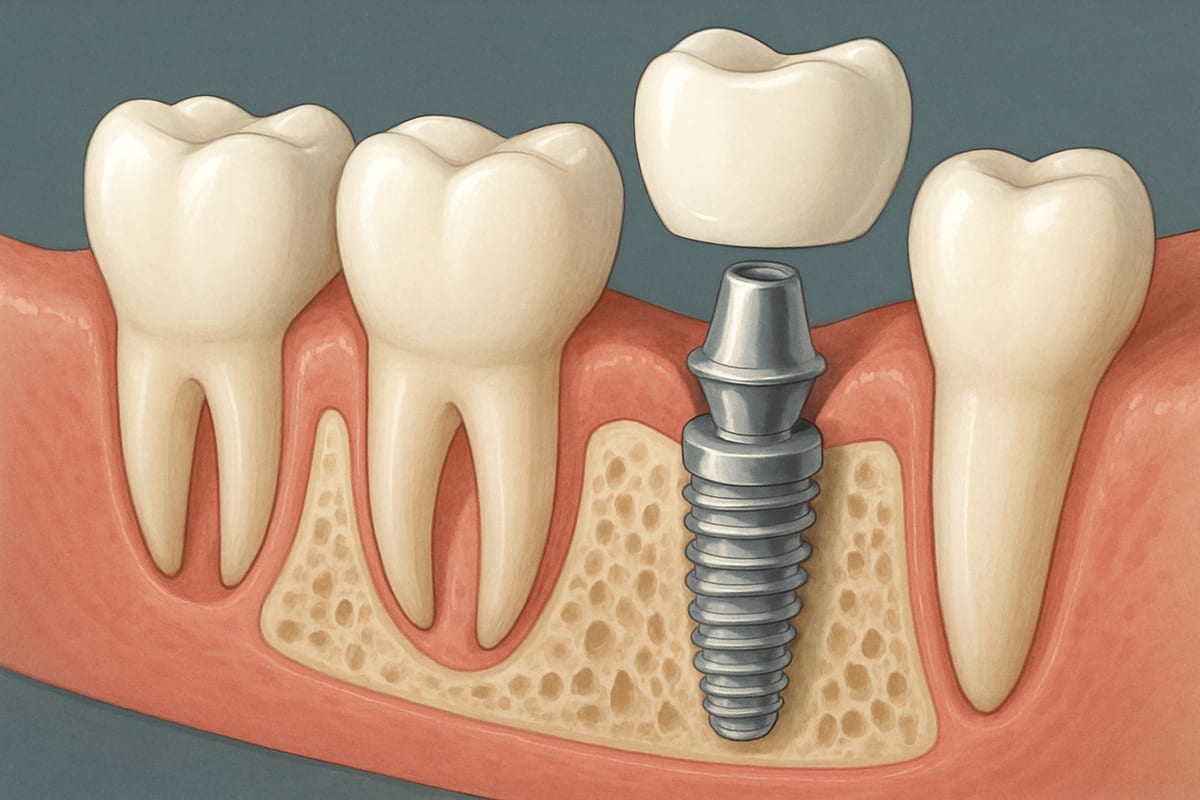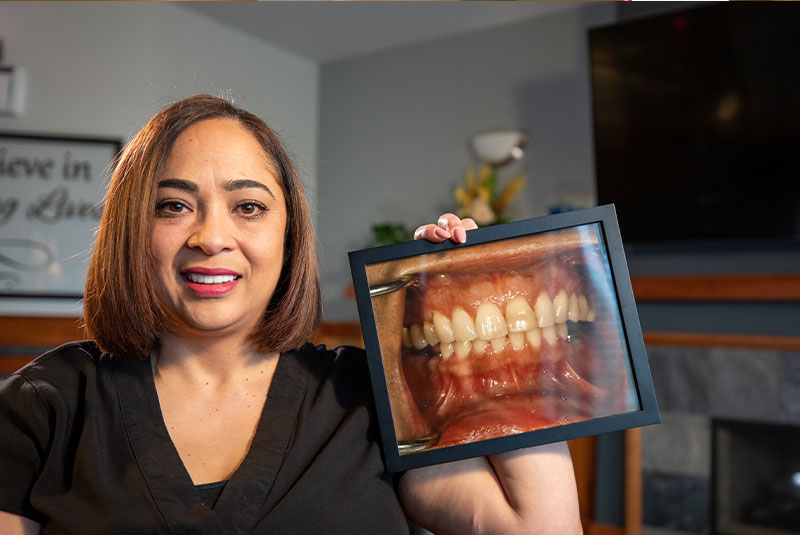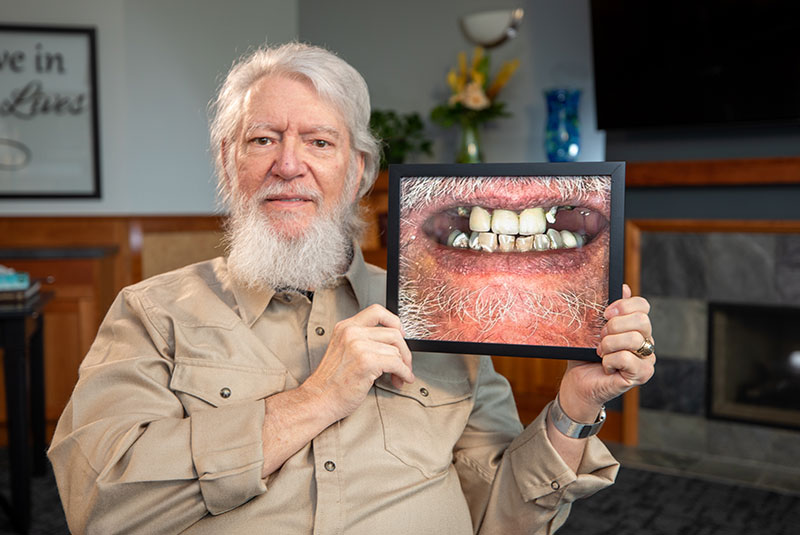Teeth implantation is the surgical placement of artificial tooth roots to support replacement teeth. People who lose one or more teeth from decay, injury, or age often consider this option. In this post you’ll learn what teeth implantation involves, who is a good candidate, the treatment types and timelines, benefits and risks, typical costs, and how to choose the right practice.
What is teeth implantation?
Dental implants are small titanium posts placed into the jawbone to act like natural tooth roots. A typical implant restoration has three parts: the implant (the screw in the bone), the abutment (the connector), and the crown or prosthesis (the visible tooth or bridge). Because the implant bonds with bone, it restores chewing function and supports a natural appearance while helping prevent bone loss that follows missing teeth.
Who is a good candidate for teeth implantation?
General health and age
Most adults in good general health can receive implants. Chronic conditions like diabetes or heart disease must be well controlled. Age alone is not a barrier — many older adults are excellent candidates if their health and bone support are adequate.
Bone volume and oral health
Enough jawbone is needed to hold the implant. If bone is thin or lost, bone grafting or sinus lifts can rebuild the site. Healthy gums and control of infection are also required before implants are placed.
Expectations and lifestyle factors
Non-smokers have better success rates; smokers are at higher risk of complications. Teeth grinders (bruxism) may need night guards or treatment before implant placement. Candidates should expect a timeline that may include months of healing for staged treatments and must be willing to maintain oral hygiene and attend follow-ups.
Types of implant treatments and typical timelines
Single tooth implant
Single implants replace one missing tooth. After placement, the implant needs time to integrate with bone — often 3 to 6 months — before a final crown is attached. In some cases, a temporary crown is placed the same day.
Multiple implants and implant-supported bridges
When several adjacent teeth are missing, two or more implants can support a bridge. Timelines vary by case and whether grafting is required; integration typically takes a few months before the final prosthesis is delivered.
Full-arch solutions (All-on-4 / immediate load)
Full-arch restorations can be supported by as few as four implants. All-on-4 immediate-load or “same-day” protocols allow a provisional arch to be attached the same day if implants achieve strong initial stability. Staged approaches place a temporary prosthesis followed by a refined final arch after healing.
What to expect during the implant process
Consultation and planning
A consult includes medical history review, oral exam, and 3D imaging (CBCT). Digital impressions and surgical guides improve accuracy. Good planning identifies bone needs, nerve locations, and the ideal implant positions.
Surgery and sedation options
Surgery is typically done with local anesthesia; options include IV sedation for comfort. The implant is placed into the bone, and an abutment may be attached that day or later depending on the case. Procedures can take from under an hour (single implant) to several hours (full-arch cases).
Recovery and follow-up
Expect mild swelling and soreness for a few days. Short-term antibiotics or pain meds may be prescribed. Follow-up visits check healing and, when integration is confirmed, the final prosthesis is attached — often 3 to 6 months later unless an immediate-load plan is used.
Benefits and risks of teeth implantation
Key benefits
- Improved chewing and speech compared with removable dentures
- Bone preservation where teeth are missing
- Durability — implants can last decades with proper care
- Natural appearance and comfort
Possible risks and complications
Risks include infection, implant failure, nerve or sinus injury, and complications from insufficient planning. Careful evaluation and experienced surgery reduce these risks.
Factors that affect success rates
Success depends on surgical skill, quality of planning and imaging, the implant system, patient health (smoking, diabetes), and post-op care and hygiene.
Cost, financing, and choosing the right practice
Costs vary widely based on the number of implants, need for bone grafts or sinus lifts, the type of prosthesis, lab fees, and anesthesia. Insurance may cover parts of treatment but often not the entire cost. Many offices offer financing plans, third-party payment options, or in-house financing. Ask about itemized estimates, what is included (surgery, prosthesis, follow-ups), and any warranty or maintenance policies.
Dr. Nathan Doyel, DMD, FAAID, DABOI/ID, and the New Smiles Dental team focus on full-arch implant solutions and use advanced digital tools — CBCT, CEREC/PrimeScan, in-house CAD/CAM and lab work, 3D printing, guided surgery, and IV sedation — to improve predictability and offer same-day options when appropriate.
If you’re considering teeth implantation, schedule a consult to review your health, imaging, and options. A tailored plan will show whether implants are right for you and outline the timeline and costs you can expect.













